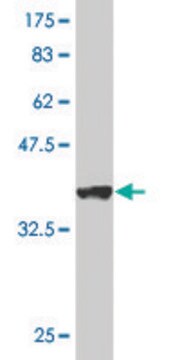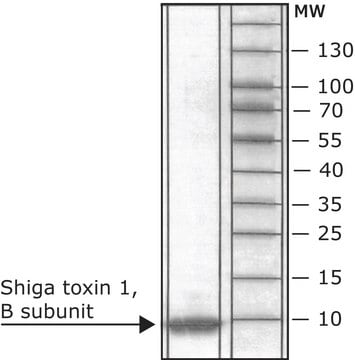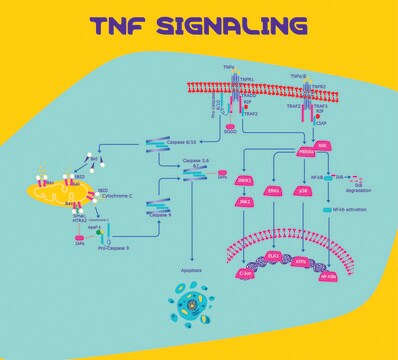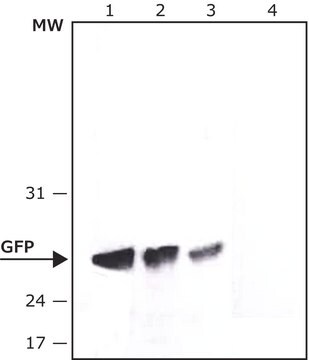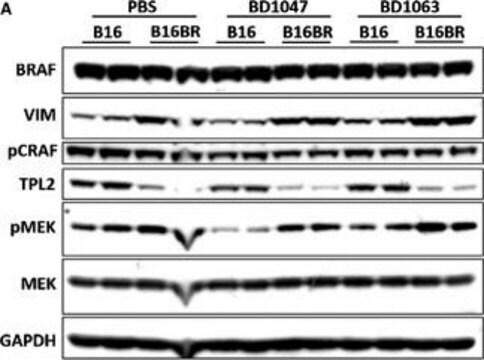SAB4200061
Anti-CYLD (C-terminal) antibody produced in rabbit
~1.0 mg/mL, affinity isolated antibody
Synonim(y):
Anti-Cylindromatosis (turban tumor syndrome), deubiquitinating enzyme CYLD, Anti-Ubiquitin carboxyl-terminal hydrolase CYLD, Anti-Ubiquitin specific peptidase like 2, Anti-Ubiquitin thiolesterase CYLD
About This Item
Polecane produkty
pochodzenie biologiczne
rabbit
Poziom jakości
białko sprzężone
unconjugated
forma przeciwciała
affinity isolated antibody
rodzaj przeciwciała
primary antibodies
klon
polyclonal
Postać
buffered aqueous solution
masa cząsteczkowa
antigen ~110 kDa
reaktywność gatunkowa
human
stężenie
~1.0 mg/mL
metody
immunohistochemistry: 10-20 μg/mL using biotin / ExtrAvidin®-Peroxidase staining of heat-retrieved formalin-fixed, paraffin-embedded human skin sections
western blot: 2.5-5.0 μg/mL using whole extract of HEK-293T cells overexpressing human CYLD
numer dostępu UniProt
Warunki transportu
dry ice
temp. przechowywania
−20°C
docelowa modyfikacja potranslacyjna
unmodified
informacje o genach
human ... CYLD(1540)
Powiązane kategorie
Opis ogólny
Zastosowanie
Działania biochem./fizjol.
Postać fizyczna
Informacje prawne
Oświadczenie o zrzeczeniu się odpowiedzialności
Nie możesz znaleźć właściwego produktu?
Wypróbuj nasz Narzędzie selektora produktów.
Kod klasy składowania
10 - Combustible liquids
Temperatura zapłonu (°F)
Not applicable
Temperatura zapłonu (°C)
Not applicable
Certyfikaty analizy (CoA)
Poszukaj Certyfikaty analizy (CoA), wpisując numer partii/serii produktów. Numery serii i partii można znaleźć na etykiecie produktu po słowach „seria” lub „partia”.
Masz już ten produkt?
Dokumenty związane z niedawno zakupionymi produktami zostały zamieszczone w Bibliotece dokumentów.
Nasz zespół naukowców ma doświadczenie we wszystkich obszarach badań, w tym w naukach przyrodniczych, materiałoznawstwie, syntezie chemicznej, chromatografii, analityce i wielu innych dziedzinach.
Skontaktuj się z zespołem ds. pomocy technicznej

